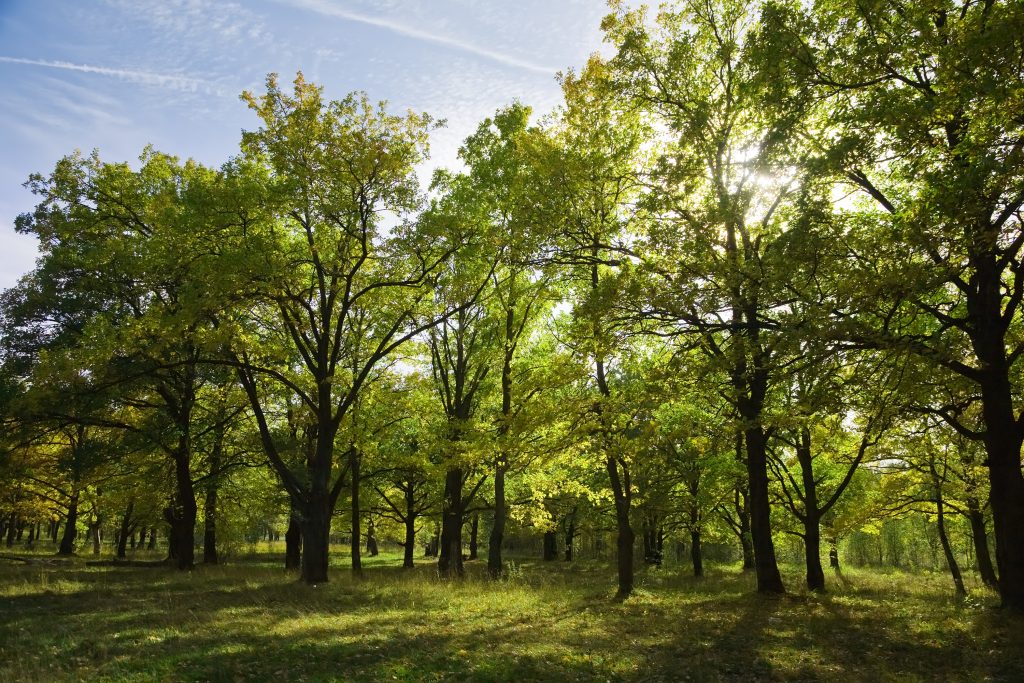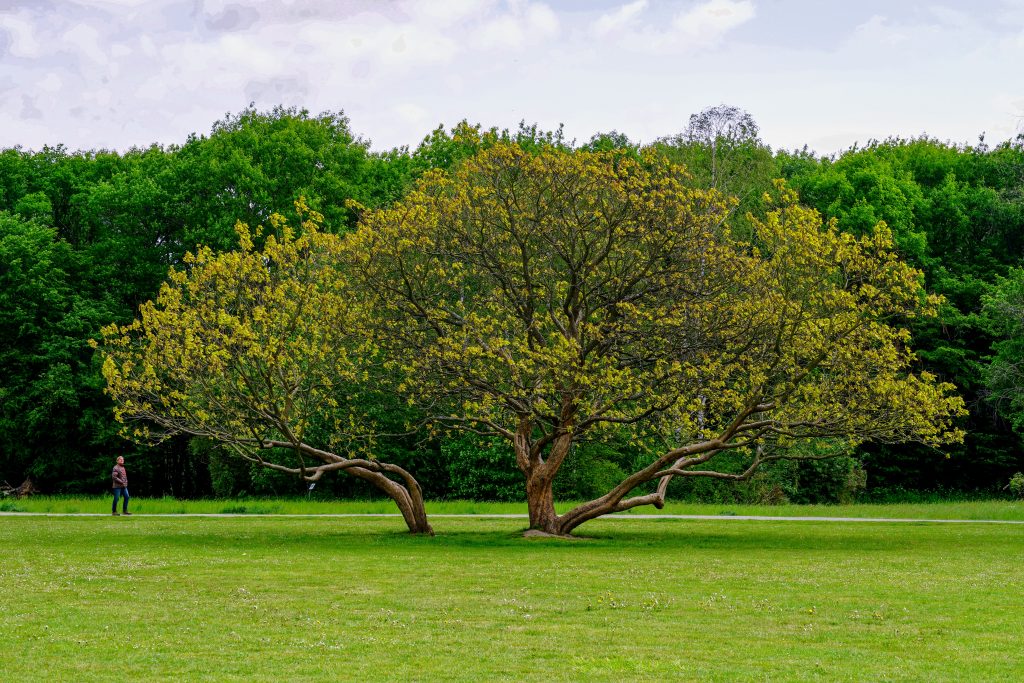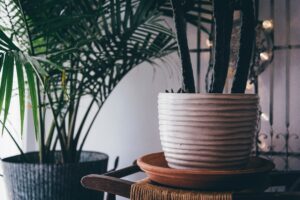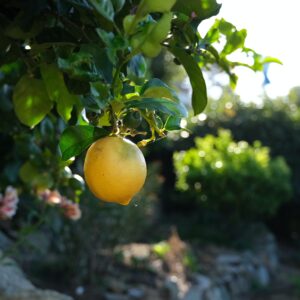THE BENEFITS OF USING TREES FOR NATURAL PEST CONTROL
THE BENEFITS OF USING TREES FOR NATURAL PEST CONTROL
Tree health and disease management are critical aspects of maintaining the well-being of individual trees, the overall environment, and the communities they inhabit. Trees provide numerous ecological, social, economic, and aesthetic benefits, making their health a matter of utmost importance. Here’s an explanation of why tree health and disease management are essential:
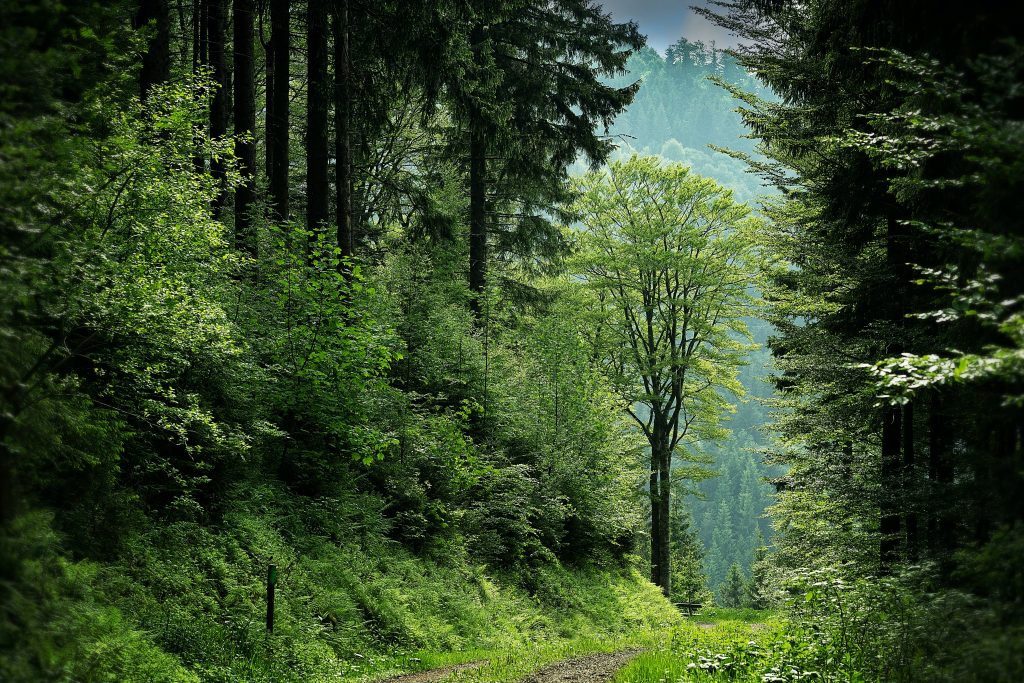
- Ecological Balance:
- Trees play a crucial role in ecosystems by providing habitat, food, and shelter for various species. Their health contributes to a balanced and thriving ecosystem.
- Air Quality Improvement:
- Healthy trees contribute to cleaner air by absorbing carbon dioxide and releasing oxygen through photosynthesis. They also filter pollutants from the air, improving overall air quality.
- Climate Change Mitigation:
- Trees sequester carbon dioxide, a greenhouse gas, helping to mitigate climate change by reducing atmospheric CO2 levels.
- Soil Stabilization:
- Tree roots help prevent soil erosion, stabilize slopes, and reduce the risk of landslides.
- Water Regulation:
- Trees play a role in regulating water cycles by intercepting rainfall, reducing runoff, and aiding groundwater recharge.
- Biodiversity Support:
- Healthy trees provide habitats and resources for birds, insects, fungi, and other organisms, supporting local biodiversity.
- Aesthetic and Cultural Value:
- Trees enhance the beauty of landscapes, provide shade, and contribute to cultural and historic heritage. They enrich the visual appeal of communities.
- Property Value Enhancement:
- Well-maintained trees and green spaces can increase property values, benefiting homeowners and the local economy.
- Human Health and Well-Being:
- Access to green spaces and nature has been linked to reduced stress, improved mental health, and overall well-being.
- Economic Impact:
- Industries such as tourism, forestry, and landscaping rely on healthy trees for economic activities and job creation.
- Educational and Recreational Opportunities:
- Healthy trees offer spaces for outdoor activities, education, and recreational pursuits. They provide opportunities for learning about nature and ecosystems.
- Community Identity and Pride:
- Trees contribute to the unique identity of neighborhoods and cities. Well-maintained landscapes foster community pride.
- Wildlife Habitat:
- Healthy trees support wildlife by providing nesting sites, food sources, and shelter, contributing to urban and natural biodiversity.
- Disease Prevention and Control:
- Proactively managing tree diseases helps prevent their spread to other trees and maintains overall ecosystem health.
- Sustainable Urban Development:
- Incorporating trees into urban planning contributes to sustainable development, creating livable and resilient cities.
- Longevity and Heritage:
- Ancient and historic trees are living witnesses to history, culture, and the passage of time. Preserving their health ensures their legacy.
In summary, the importance of tree health and disease management extends beyond individual trees; it affects ecosystems, human health, economies, and the environment as a whole. Ensuring the well-being of trees through proper care, disease prevention, and responsible management is crucial for creating sustainable and thriving communities.
Pros of Using Chemicals for Tree Disease Control
Using chemicals for tree disease control, often referred to as chemical treatments or pesticides, can offer several advantages when employed responsibly and in appropriate situations. These pros highlight the potential benefits that chemicals can provide in managing tree diseases effectively. It’s important to note that while there are advantages, careful consideration and proper application are essential to minimize negative impacts. Here’s an explanation of the pros of using chemicals for tree disease control:
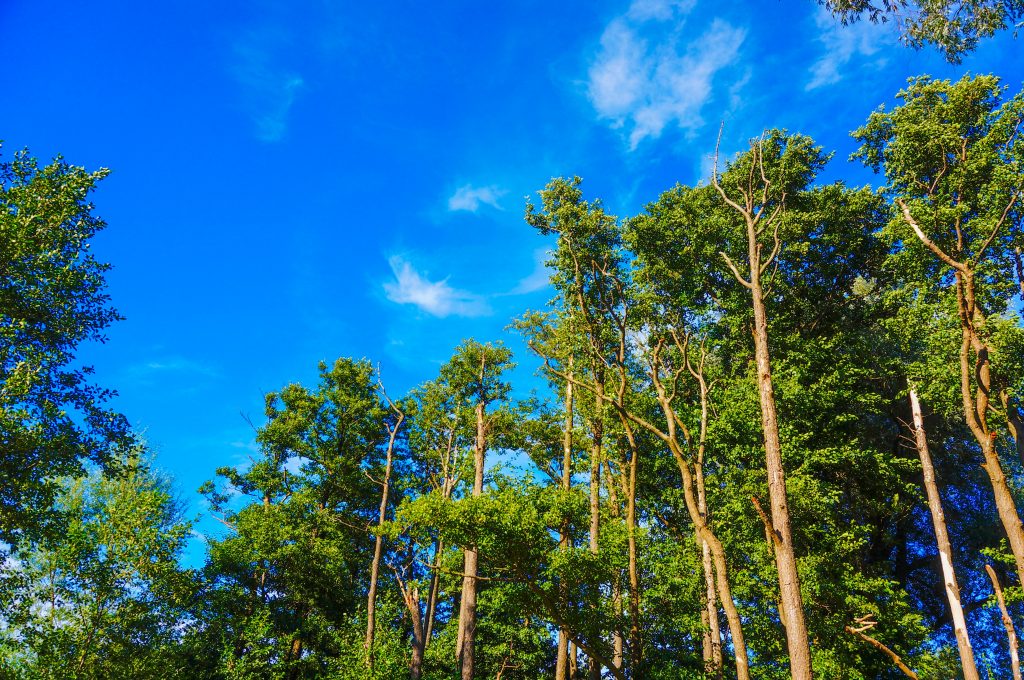
- Effective Disease Management:
- Chemical treatments can rapidly suppress disease pathogens, preventing further damage and spread within the tree population.
- They can address existing infections and help protect trees from potential infestations.
-
Precision Targeting:
- Chemical treatments can be designed to target specific pathogens responsible for a particular disease, minimizing harm to non-target organisms.
- This precision reduces the risk of unintended environmental effects compared to broader treatments.
- Broad Spectrum Control:
- Certain chemicals have the capability to control multiple disease types, simplifying disease management efforts and minimizing the need for multiple treatments.
- This can be particularly beneficial in areas where multiple diseases are prevalent.
- Predictable Results:
- Chemical treatments often yield consistent and reliable outcomes when applied correctly and at the right times.
- This predictability ensures that tree health and vitality are maintained or restored.
- Rapid Action:
- Chemical treatments can act quickly to halt disease progression, providing a timely response to infections that might otherwise spread rapidly.
- Proven Track Record:
- Many chemical treatments have been extensively researched and tested for their efficacy in controlling specific tree diseases.
- These treatments have a proven track record of success when used according to recommended guidelines.
- Preservation of Valuable Trees:
- Chemical treatments can be particularly valuable for preserving significant, historic, or rare trees that hold cultural or ecological importance.
- Minimized Impact on Tree Structure:
- Chemical treatments do not involve physical pruning or manipulation of the tree’s structure, minimizing potential impacts on its form and aesthetics.
- Cost-Effectiveness:
- In some cases, chemical treatments can be more cost-effective than alternative methods of disease control, such as removing and replacing infected trees.
- Support for Urban Canopies:
- Chemical treatments can help maintain healthy trees in urban environments, preserving the benefits of canopy cover for air quality, aesthetics, and human well-being.
- Integrated Pest Management (IPM):
- Chemical treatments can be integrated into a holistic IPM approach that combines various control strategies, such as biological controls and cultural practices.
- Immediate Solution for Emergency Situations:
- In emergency situations where rapid intervention is needed to prevent catastrophic tree loss, chemical treatments can provide immediate relief.
In conclusion, using chemicals for tree disease control can offer effective and reliable solutions for managing certain diseases. However, these advantages should be weighed against potential drawbacks, environmental considerations, and the necessity for responsible application. Consulting with certified arborists, following recommended guidelines, and considering alternative control methods are important steps to ensure that chemical treatments are used appropriately and ethically.
Cons of Using Chemicals for Tree Disease Control
Using chemicals for tree disease control, while effective in certain situations, also comes with several potential drawbacks and disadvantages that should be carefully considered. These cons highlight the environmental, health, and long-term impacts associated with chemical treatments. Here’s an explanation of the cons of using chemicals for tree disease control:
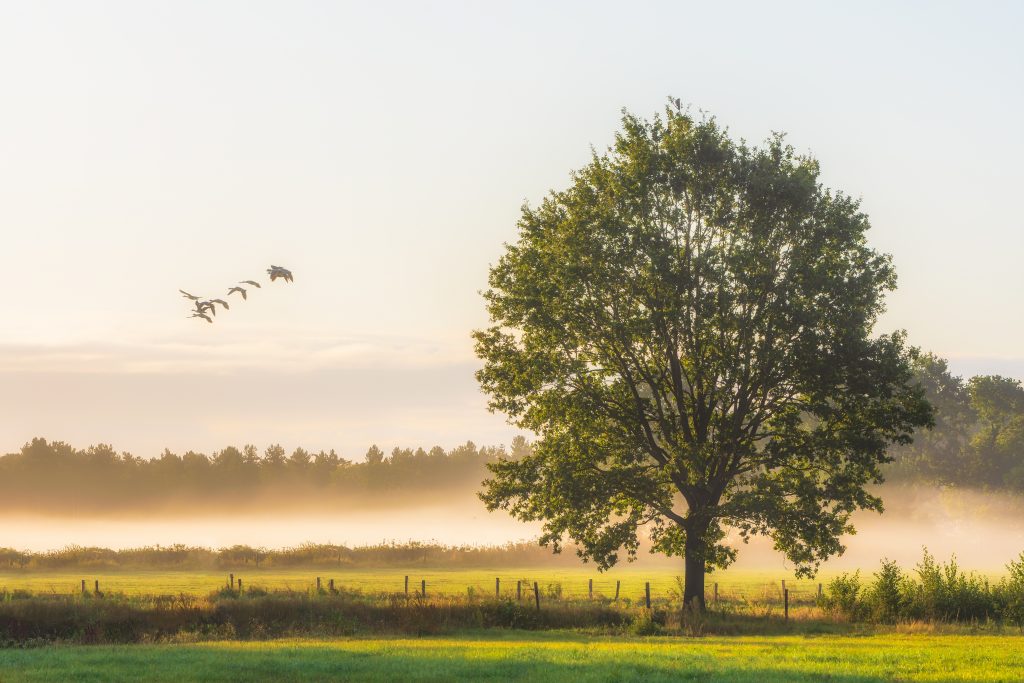
- Environmental Impact:
- Chemical treatments can have negative effects on non-target organisms, including beneficial insects, birds, and other wildlife, disrupting the balance of ecosystems.
- Runoff of chemical residues into water bodies can lead to water pollution and harm aquatic life.
- Non-Selective Impact:
- Some chemical treatments are non-selective, affecting both disease-causing pathogens and beneficial microorganisms, which can have unintended consequences on soil health and ecosystem dynamics.
- Resistance Development:
- Frequent use of chemicals can lead to the development of resistant strains of pathogens. This can render certain treatments ineffective over time, reducing their long-term viability.
- Health Concerns:
- Chemical treatments may pose health risks to humans, especially when used improperly or without adequate protective measures.
- Exposure to chemical residues through contact, inhalation, or consumption can result in health issues for workers, residents, and pets.
- Soil and Water Contamination:
- Chemicals used for tree disease control can leach into the soil, affecting soil health and microbial communities. Contaminated soils can impact plant growth and surrounding ecosystems.
- Chemical runoff can also contaminate groundwater and surface water bodies, leading to broader environmental issues.
- Long-Term Environmental Persistence:
- Some chemicals can persist in the environment for extended periods, potentially affecting future tree generations and ecosystems.
- Ecosystem Disruption:
- Chemical treatments can disrupt natural predator-prey relationships, reducing the effectiveness of biological controls and potentially causing unintended pest outbreaks.
- Public Perception and Trust:
- The use of chemicals for tree disease control can negatively influence public perception and trust, especially if not communicated transparently or responsibly.
- Concerns about chemical usage can lead to community backlash and resistance to treatment programs.
- Legal and Regulatory Considerations:
- Chemical treatments are subject to regulations and restrictions to ensure human and environmental safety. Failure to comply with regulations can lead to legal issues and penalties.
- Short-Term Solutions:
- Chemical treatments may provide immediate disease suppression, but they often address symptoms rather than addressing the underlying causes of tree health issues.
- Relying solely on chemical treatments may not lead to sustainable, long-term solutions.
- High Costs:
- Chemical treatments, especially those requiring professional application, can be expensive. Costs can accumulate over time, especially for recurring treatments.
- Limited Impact on Overall Tree Health:
- While chemical treatments may control specific diseases, they may not necessarily enhance overall tree health or resilience to other stressors.
- Need for Expertise:
- Proper application of chemical treatments requires expertise to ensure they are effective and safe. Inadequate application can result in wasted resources and potential negative outcomes.
In conclusion, the cons of using chemicals for tree disease control underscore the importance of responsible and informed decision-making. Before implementing chemical treatments, it’s essential to consider their potential environmental, health, and long-term impacts, and to explore alternative methods that prioritize ecological balance and sustainability. Integrated approaches that combine various control methods can minimize the negative consequences associated with chemical treatments while effectively managing tree diseases.
About Murray, Utah
Murray is a city situated on the Wasatch Front in the core of Salt Lake Valley in the U.S. state of Utah. Named for territorial governor Eli Murray, it is the state's fourteenth largest city. According to the 2020 census, Murray had a population of 50,637. Murray shares borders with Taylorsville, Holladay, South Salt Lake and West Jordan, Utah. Once teeming with heavy industry, Murray's industrial sector now has little trace and has been replaced by major mercantile sectors. Known for its central location in Salt Lake County, Murray has been called the Hub of Salt Lake County. Unlike most of its neighboring communities, Murray operates its own police, fire, power, water, library, and parks and recreation departments and has its own school district. While maintaining many of its own services, Murray has one of the lowest city tax rates in the state.
Neighborhoods in Murray, Utah
Murray Oakes, Grant Park, Southwood Park, Murray Park, Murray Park Restrooms, Willow Pond Park, Neighborhood Veterinary Care
Things To Do in Murray, Utah
Bus Stops in Murray, Utah to Truco Services, Inc.
Bus Stop in Murray Central Station (Bay C) Murray, Utah to Truco Services, Inc.
Bus Stop in State St @ 4801 S Murray, Utah to Truco Services, Inc.
Bus Stop in Murray North Station Murray, Utah to Truco Services, Inc.
Bus Stop in State St @ 4949 S Murray, Utah to Truco Services, Inc.
Bus Stop in Murray Central Frontrunner/Trax Station Murray, Utah to Truco Services, Inc.
Bus Stop in Murray Blvd / Vine St (SB) Murray, Utah to Truco Services, Inc.
Bus Stop in State St @ 3925 S Murray, Utah to Truco Services, Inc.
Bus Stop in State St @ 4824 S Murray, Utah to Truco Services, Inc.
Bus Stop in State St @ 5223 S Murray, Utah to Truco Services, Inc.
Bus Stop in Murray Blvd / Allendale Dr (NB) Murray, Utah to Truco Services, Inc.
Bus Stop in Murray Blvd @ 5039 S Murray, Utah to Truco Services, Inc.
Bus Stop in State St @ 4721 S Murray, Utah to Truco Services, Inc.
Driving Directions in Murray, Utah to Truco Services, Inc.
Driving Directions from Woodruff Tree Trimming and Removal to 4640 Commerce Dr, Murray, UT 84107, USA
Driving Directions from Reliable Tree Care to 4640 Commerce Dr, Murray, UT 84107, USA
Driving Directions from Tree Pro-Tech to 4640 Commerce Dr, Murray, UT 84107, USA
Driving Directions from Prestige Tree And Landscape to 4640 Commerce Dr, Murray, UT 84107, USA
Driving Directions from Excellence Tree & Landscape to 4640 Commerce Dr, Murray, UT 84107, USA
Driving Directions from Amen Trees to 4640 Commerce Dr, Murray, UT 84107, USA
Driving Directions from Tim's Tree Care to 4640 Commerce Dr, Murray, UT 84107, USA
Driving Directions from Jordan Tree Service - Murray to 4640 Commerce Dr, Murray, UT 84107, USA
Driving Directions from Arbor Works to 4640 Commerce Dr, Murray, UT 84107, USA
Driving Directions from Diamond Tree Experts to 4640 Commerce Dr, Murray, UT 84107, USA
Driving Directions from Green Tree Arborist to 4640 Commerce Dr, Murray, UT 84107, USA
Driving Directions from TruCo Services to 4640 Commerce Dr, Murray, UT 84107, USA
Reviews for Truco Services, Inc. Murray, Utah
Emily Abercrombie
We had a great experience with TruCo! They were well priced, responsive and prompt. Michael was a pleasure to work with and gave us advice on which plants to put in where we took out our ugly old shrubs. I would highly recommend this company!!!
Michelle Turpin
TruCo Services gets 5 stars from us for customer service. We experienced a few issues with their services this last year and Rob Eccles in senior management, stepped in and immediately handled our issues. He was very committed to making sure they understood our expectations and would execute to make us happy.
Siobhan Billingsley
I work for a property management company and have the pleasure of working with Rob at a community in Sandy. He has been incredible to work with and always responds in a timely manner. He knows all the homeowners by name and address and is aware of all the "problem" areas when it comes to sprinklers. I never have to worry about following up with him because he always reaches out to provide me with an update. If you're looking to work with someone who takes pride in their job, is professional, and can solve the worst landscaping problems thrown your way, Rob is your guy. Thank you, Rob for all you do!
Jaime S.
We have used Truco at 2 of the complexes we manage, they have been great to work with. Good quality service, outstanding customer service with good communication. That's hard to find these days. I highly recommend them. Travis has been awesome to work with.
Jerusha Smart
We use TruCo for a majority of our properties and our home. While other landscaping companies we use come and go for various reasons like cost, communication issues, work performance, etc., TruCo is always consistent in price and work. Also, Rob is the best.
